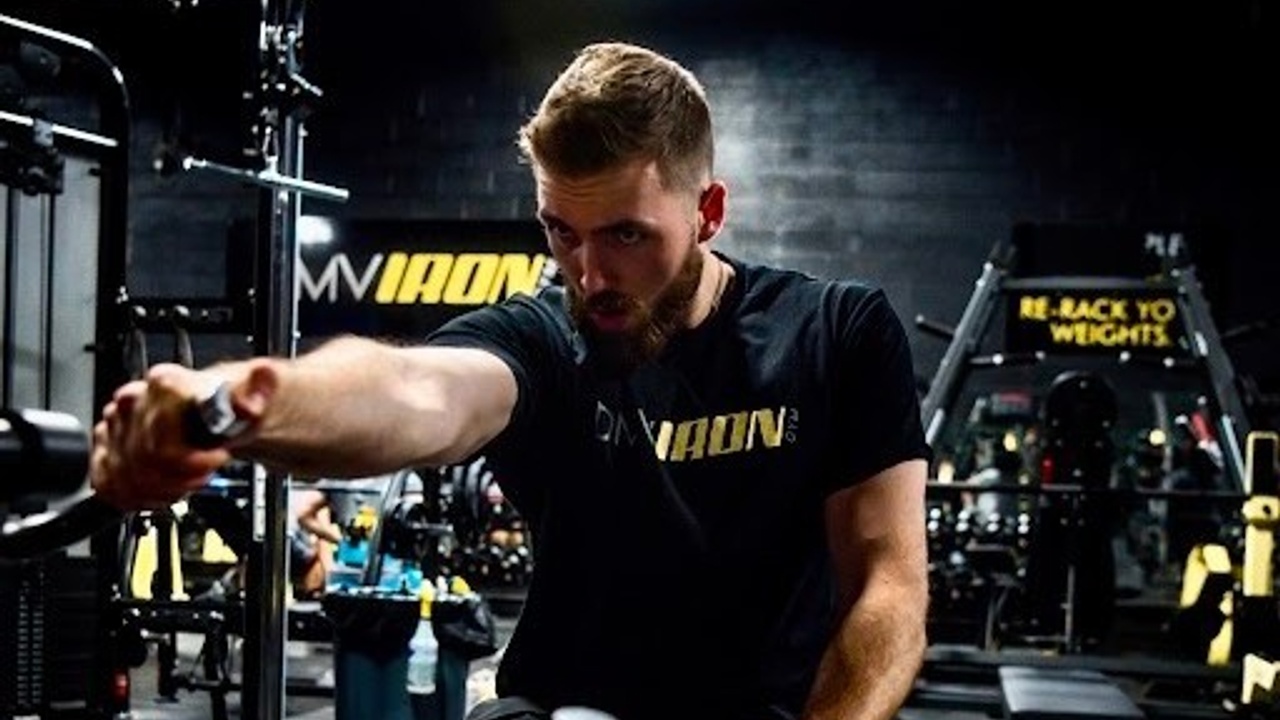KNOW YOUR INTENSITIES

By Nick Ridpath
Nick is a personal trainer and online coach based out of DMV Iron Gym in Alexandria, Virginia. First introduced to fitness through sports, Nick played division I football before entering the coaching scene. Nick has worked as head of strength and conditioning for a private sports performance gym, as a trainer in PT clinics, and now runs his own in person and remote business. Nick believes in a principles based approach to provide results for his clients. You can best contact him on Instagram @nickridpath_
Know Your Intensities
Three of the foundational tenets of the Pre-Script™ Level 1 are time, distance, and load.
We often view load as being synonymous with the word intensity.
Higher load = higher intensity
Lower load = lower intensity
However, we can further break down intensity into two different subcategories – absolute intensity and relative intensity. These two subdivisions will give us more specific definitions for broader application in our programming.
The two are not necessarily mutually exclusive. While absolute intensity often refers to absolute loading, many will only see it through this lens.
Relative intensity refers to proximity to failure - RPE / RIR
The big difference here is that we can train a high relative intensity, or proximity to failure, even in absence of higher absolute loads. This has a very useful application when it comes to dealing with injuries/load management, pleasing difficult clients, and generally forming the longest runway for progression. The takeaway here is that we can keep relative intensity on the upper end of the scale essentially all of the time as long as we know how to appropriately manipulate absolute intensities.
We can mediate the scaling of absolute intensities in a few different ways.
We can scale by changing the modality - introducing exercise progressions that increase in absolute loading potential with each advancement.
Cable Press → DB Bench → Barbell Bench
We can scale absolute loading by changing exercise order. Anyone who has ever heard of the bro term “pre-exhaust” this is where that comes into play. If we were to start a session with a cable fly and follow that up with a DB Press, having performed the cable fly first will limit our loading of the DB press. A progression here would be in a subsequent training block taking the cable fly out and moving the DB press first in order. In absence of the “pre-exhausting” cable fly we can now load the DB press heavier.
Block 1
A1 Cable Fly
B1 DB Press
Block 2
A1 DB Press
We can also scale volume. With an increase in volume, absolute loading will then have to drop. Intuitively if we go from doing a set of 10 to a set of 20 on the same exercise load will have to decrease to accommodate that. Once we’ve reached the desired capacity, skill proficiency, or whatever has been predetermined as the end of the progression, we can then start to scale load or introduce a more intense modality. Rinse, repeat.
With a lower volume approach, for example 1–3 sets of 6–12 repetitions, we’re pushing for more of a direct mechanical tension stimulus. Load is high, tension is high. The downside here is that solely chasing higher absolute loads potentially exposes us to a shorter runway of progression as well as a greater potential risk for injury via overshooting adaptable stimulus.
With higher volume approaches, for example 3–4 sets of 12–20, the goal is to accrue a similar number of reps in proximity to failure as with a lower volume approach – but get there via accumulated fatigue more so than direct mechanical tension. The downsides of this is that the higher we push the volume the more room there is for neurological fatigue to occur and for trainees to undershoot intensity disguised as discomfort. It’s important we find a sweet spot here when we start scaling volume to account for this.
Ultimately understanding how we can manipulate absolute intensity is going to be our greatest tool for load management around injuries and long term progression. Finding ways to produce a high relative intensity in absence of loading trouble areas can be a huge game changer in terms of injury risk management.
A common challenge for many coaches is not knowing how to use long term progressions to get clients from point A to point B, especially while dealing with injury along the way. Mapping out these progressions via ramping volume, or perhaps scaling via changed modality or added load can give us a big picture view of how we can expect a client to make gains.
In the plague that is the internet, we see rifts between the low volume/minimum effective dose camp, and the high volume camp.
In my eyes neither camp is wrong, the context of where the two may win and lose needs to be understood so we can apply it in a less black and white way.
Understanding principles and creating principle based decisions is one of the greatest tools a coach can have in their arsenal.
Recent Posts
